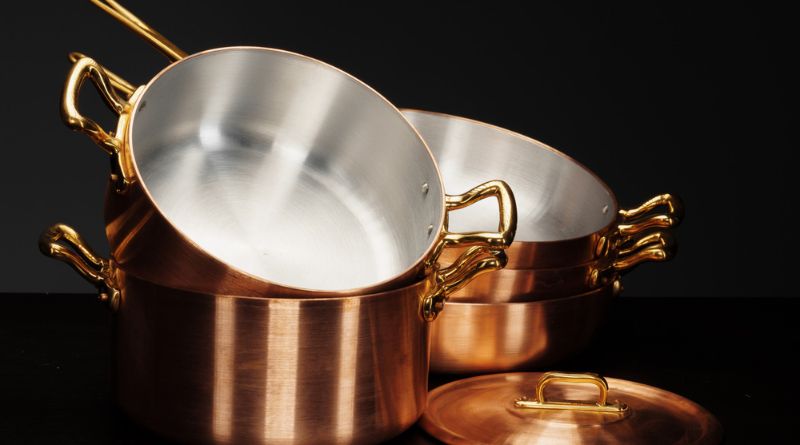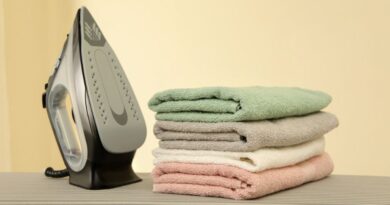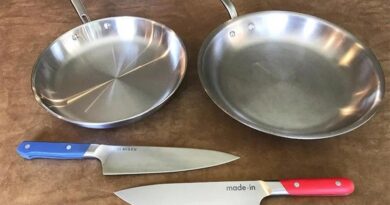Copper cookware is a timeless classic that has been cherished by chefs and home cooks for generations. With its remarkable heat conductivity and aesthetic appeal, it’s no wonder that copper pots and pans remain a favorite in the culinary world. In this article, we’ll delve into seven essential things you should know about copper cookware, from its heating properties to maintenance tips.
Some Important Things About Copper Cookware
Copper cookware boasts exceptional heat conductivity, allowing precise temperature control for impeccable cooking.
Excellent Heat Conduction
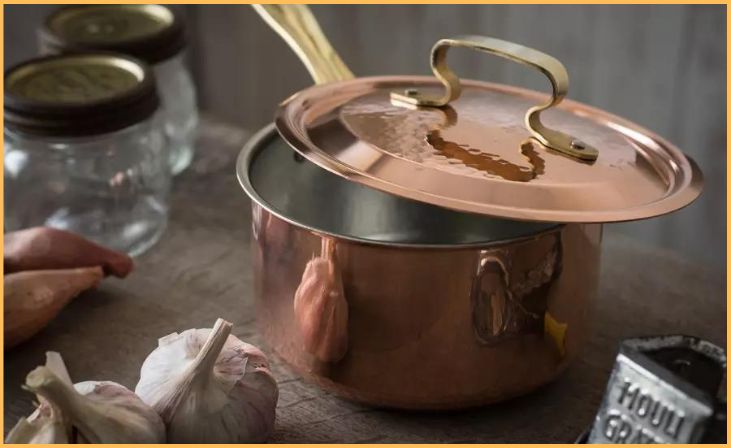
Copper’s reputation as an outstanding conductor of heat is well-deserved. Its ability to swiftly and uniformly distribute heat across cooking surfaces is a standout quality. This characteristic makes copper pots and pans an ideal choice for various cooking tasks.
Imagine sautéing a medley of vegetables or delicately simmering sauces—these tasks demand even heat distribution to ensure that every element in the pan cooks consistently. Here, copper’s proficiency shines brightly. Its exceptional heat conductivity eliminates the formation of hot spots, guaranteeing that the entire cooking surface maintains a uniform temperature.
This uniformity not only facilitates precise temperature control but also serves as a safeguard against the risk of overcooking or burning. Whether you’re aiming for a perfectly golden sear or gently coaxing flavors together in a sauce, copper cookware’s even heat distribution ensures that each ingredient receives the right amount of heat, resulting in flawlessly cooked dishes every time.
Read also: Look Closely At These Crime Scene Kitchen Contestants or Detectives!
Efficient Heat Distribution
Copper cookware’s exceptional quality lies in its immediate response to changes in heat levels. When alterations in temperature are made, copper pans exhibit an almost instantaneous reaction. This rapid reactivity is a game-changer for chefs, granting them an elevated level of control over the cooking process.
Imagine you’re working on a steak, aiming for that impeccable sear, or delicately caramelizing sugar for a dessert. These tasks demand precision in heat management. Here, the swift response of copper cookware to adjustments in temperature becomes invaluable. It allows chefs to fine-tune the heat levels precisely, ensuring that the desired outcome is achieved without delay.
Responsive to Temperature Changes

Copper cookware’s remarkable capacity to retain heat proves exceptionally beneficial, especially in slow cooking methods like braising. When a copper pot reaches the desired temperature, it excels in maintaining that heat consistently and evenly throughout the cooking process.
Consider the art of braising—a cooking technique that involves slowly cooking ingredients in a small amount of liquid. Here, copper’s heat retention ability becomes a game-changer. Once the copper pot is heated to the ideal temperature, it remains steadfast, providing a stable and uniform environment for the ingredients to simmer gently.
Retains Heat Well
Copper cookware, despite its numerous advantages, demands consistent upkeep to maintain its appearance and functionality. Over time, copper develops a distinct patina that some find charming, imparting a rustic and aged allure to the cookware. However, for those seeking to preserve the shiny and polished aesthetic, regular cleaning and maintenance are essential.
If you appreciate the patina, allowing copper to naturally develop its aged look may align with your preferences. However, if you prefer the lustrous shine associated with copper cookware, dedicated efforts in cleaning and maintenance become imperative. Removing tarnish and restoring its gleam involves specific cleaning techniques tailored for copper.
Requires Regular Maintenance
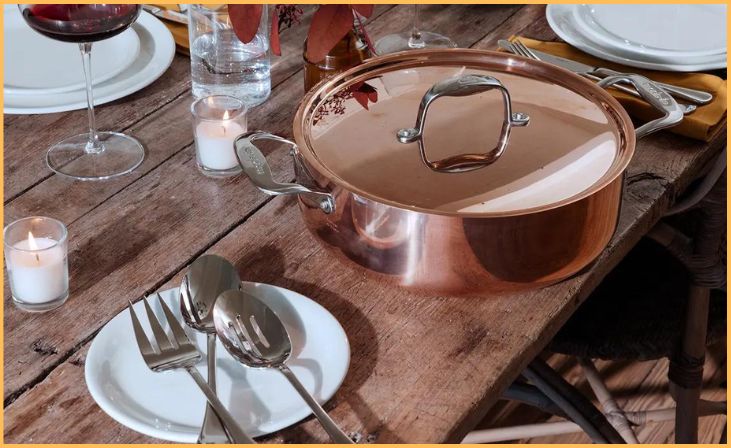
Copper possesses the propensity to interact with acidic or alkaline foods, which can result in an unwanted metallic taste permeating your meals. To circumvent this occurrence, numerous copper cookware items incorporate a protective measure: a lining made of materials such as stainless steel or tin.
Acidic foods, like tomatoes or citrus-based dishes, and alkaline ingredients can trigger a reaction when in direct contact with bare copper surfaces, potentially compromising the flavors of your culinary creations. However, the inclusion of a protective lining acts as a barrier, preventing the food from coming into direct contact with the copper.
Reacts with Certain Foods
Safeguarding the durability and aesthetics of your copper pans requires mindful handling. To preserve their longevity, it’s crucial to refrain from using abrasive cleansers or harsh scrubbers that might scratch or tarnish the surface of the copper.
Copper, despite its exceptional qualities, is susceptible to scratches and discoloration when exposed to abrasive cleaning agents. Hence, opting for gentler cleaning methods becomes imperative. Utilizing mild cleaning solutions specifically formulated for copper, along with soft cloths or non-abrasive sponges, proves effective in maintaining the cookware’s appearance and performance.
By avoiding abrasive tools and choosing gentle cleaning techniques, you safeguard the integrity of your copper pans. This approach not only sustains their visual appeal but also ensures that their exceptional heat conductivity and cooking performance remain unaffected, allowing you to continue enjoying the benefits of copper cookware for years to come.
Read also: Rice Paddle Spoon Review: Top 3 Rice Paddles
Handle with Care
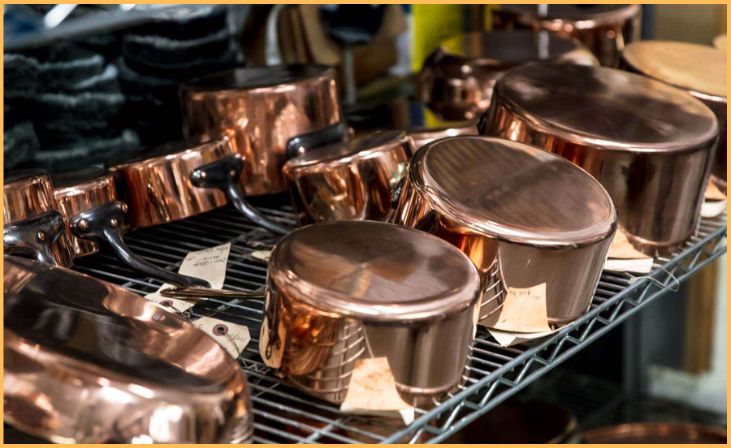
Copper cookware stands out for its exceptional heat conduction, efficient heat distribution, and impressive heat retention. Its versatility caters to the needs of both professional chefs and home cooks. However, its maintenance is crucial to prevent tarnishing and reactions with specific foods.
Regular upkeep is essential to preserve the lustrous appearance and functionality of copper cookware. This includes gentle handling and using appropriate cleaning methods to prevent tarnish and maintain its integrity. By handling your copper cookware with care, you ensure its longevity and continue reaping the benefits of this timeless kitchen essential for many years to come, enhancing your culinary experiences with its unparalleled performance.
Bottom Line
In conclusion, understanding the nuances of copper cookware unveils a world of exceptional culinary advantages. Its unparalleled heat conduction, efficient heat distribution, and remarkable heat retention make it a prized possession in the kitchen. However, regular maintenance is essential to preserve its functionality and prevent reactions with certain foods. With proper care, copper cookware becomes a versatile and reliable companion for both professional chefs and home cooks, elevating culinary experiences and ensuring delectable results for years to come.
FAQs
Copper cookware lined with stainless steel or tin is safe for cooking. However, unlined copper can react with acidic or alkaline foods, potentially posing health concerns.
Use gentle cleaning methods with mild solutions formulated for copper. Regular polishing can maintain its shine, while avoiding abrasive materials to prevent scratches.
Yes, copper cookware is versatile and compatible with gas, electric, and induction stovetops.
Copper can tarnish over time due to exposure to air, moisture, or certain chemicals. Regular cleaning and maintenance help prevent tarnishing.
Copper cookware lined with stainless steel or tin acts as a barrier, preventing direct contact between copper and acidic or alkaline foods, thus preventing unwanted reactions.

